Storytelling is an old craft. Old as humankind.
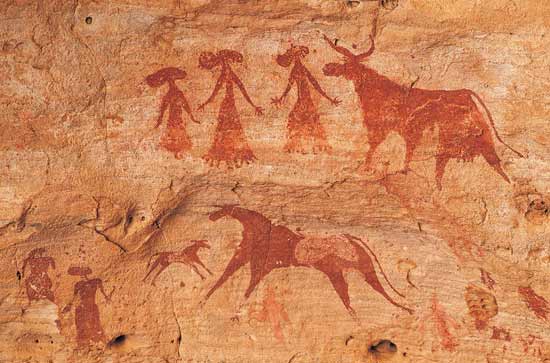
prehistoric cave art, ennedi plateau, chad
While countless stories have been lost, shrouded in time, we do know some mighty ancient tales that, having been passed down orally for centuries, were written down and later recovered. It’s mind-boggling, really, to think of the long journey these stories have taken from their original telling to our comfortable, 21st century lives.

13th century Islamic illustration
I started collecting some of them for a blog post and rapidly ran into trouble as it was so hard to resist researching and reading endless numbers of ancient tales from many cultures. In a saner moment I realized I did not really have time to do all of that! So today I’ve got just a few stories coming from the Mesopotamian and Minoan cultures. I hope they entice you to unearth other gems from elsewhere around the globe.
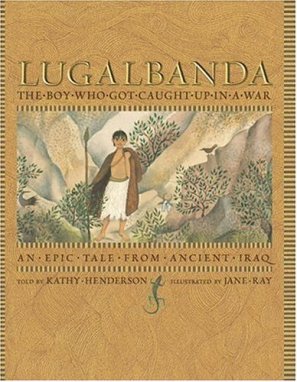 Lugalbanda: The Boy Who Got Caught Up in a War, told by Kathy Henderson, illustrated by Jane Ray
Lugalbanda: The Boy Who Got Caught Up in a War, told by Kathy Henderson, illustrated by Jane Ray
published in 2006 by Candlewick Press
73 pages
One of the oldest written stories in the world is this 5000-year-old tale from Ancient Sumer, recorded millennia ago in cuneiform on clay tablets which were discovered and finally deciphered in the 1970s. What an exciting mystery to be part of solving!
Lugalbanda was a prince who eventually became king of the ancient city of Uruk, and father to the hero of another of today’s stories, Gilgamesh.

When his father goes to war for the glory of his kingdom, Lugalbanda, though young and weak, joins the throng of soldiers. His frailty overwhelms him, though, and he is left alone to live or die at the will of the gods. Lugalbanda’s ensuing adventures, recovery, and cunning dealmaking with the monstrous Anzu bird, equip him to play the part of the unlikely hero in this marvelous, eminently readable account.
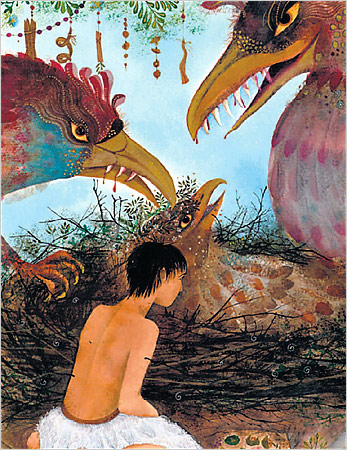
Jane Ray’s masterful, jewel-like illustration work adds elegance and vitality to every page. Gorgeous! Notes on the story provide fascinating information on Sumer, the archaeological discoveries that brought this civilization to light, and the ancient poems which Henderson has rendered into prose for us. Fantastic, for ages 6-7 and up.
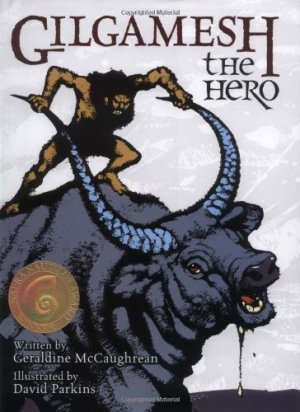 The Epic of Gilgamesh, retold by Geraldine McCaughrean, illustrated by David Parkins
The Epic of Gilgamesh, retold by Geraldine McCaughrean, illustrated by David Parkins
published in 2003 in the U.S. by Eerdmans Books for Young Readers and the UK by Oxford University Press
95 pages
Another of the oldest of stories is the incredible Epic of Gilgamesh, carved onto stone tablets which “over thousands of years, were smashed into thousands of shards,” then pieced painstakingly together by scholars.
Geraldine McCaughrean’s exceptional retelling of it makes this accessible to readers and listeners ages about 9 and up. We read this aloud when my kids were young. It is riveting stuff, I am telling you!
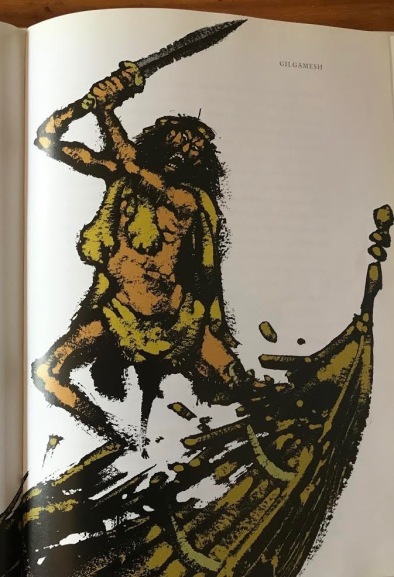
Immensely strong, godlike in fact, Gilgamesh, king of Uruk was both “a dream and a nightmare” for his people. His great friend, Enkidu, a half-wild, beast of a man, joins him in defeating monstrous Huwawa –Evil Guardian of the Forest — as well as the Bull of Heaven, thus angering the gods. The gods’ ensuing punishment — Enkidu’s death — strikes Gilgamesh to his core, driving him on a quest to discover the meaning of existence, to grapple with sorrow and the reality of mortality.

Heady, rich material, narrated with clarity, flair, and respect. Parkins’ powerful, atmospheric illustrations convey emotion, ancient origins, and the mythical qualities of its characters. This is a long, much more challenging story than Lugalbanda.
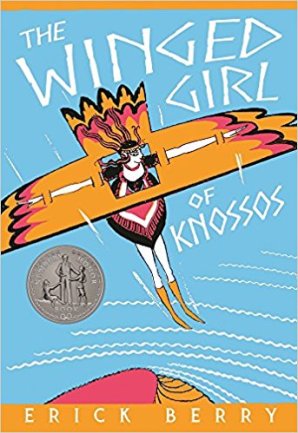 The Winged Girl of Knossos, written and illustrated by Erick Berry
The Winged Girl of Knossos, written and illustrated by Erick Berry
originally published in 1933; reissued by Paul Dry Books in 2017
218 pages
on shelves June 13, 2017
The Minoan culture based on Crete preceded the Ancient Greek civilization that is better known to most of us. Mythical King Minos of Knossos would fit into an era around 1700 BC I believe. Please, ancient scholars, correct me if I’m wrong!
In 1934, Erick Berry won a Newbery Honor for his novel mixing the stories of Theseus and the Minotaur, and the inventor Daedalus’ audacious winged-flight, into one exciting adventure. Astonishingly for the time in which it was written, Erick Berry changed the gender of the novel’s hero and Daedalus’ co-conspirator– rather than Icarus, Daedalus’ child is a girl named Inas. The book fell out of print for decades, but is now being reissued thanks to Paul Dry Books.
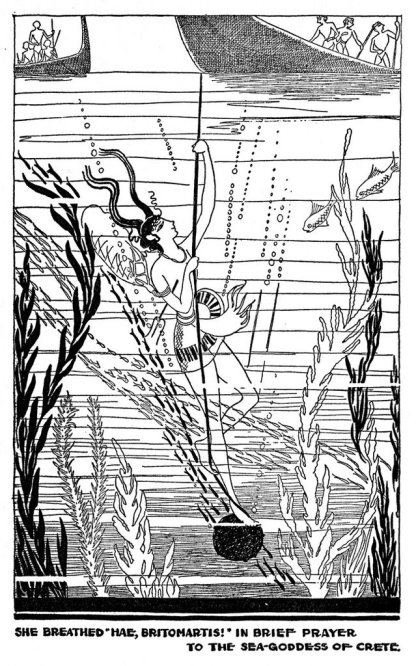
Inas is an adventurer from top to toe. A sponge diver. A bull-vaulter. A frequent-flyer, experimenting with her father’s massive, newfangled wings as she leaps from cliffs to glide out over the sparkling Aegean Sea. She’s also best friends with King Minos’ daughter, Ariadne.
Our heroine falls into danger from two sides — her father’s reckless experiments raise the hackles of superstitious Minoans, and her assistance to Ariadne in freeing the handsome Greek, Theseus, means she’s in big trouble at the palace as well. Hair-raising moments aplenty move this story along. Gobs of rich detail about the Minoan world are woven in as well.
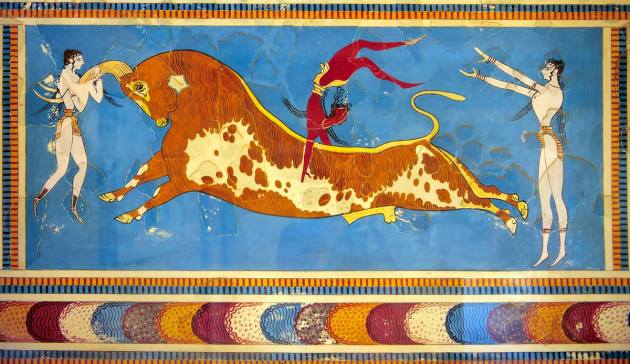
Despite the girl-power features to this novel, there are some less-than-contemporary moments, but honestly, for its age it reads very well today. I love when these excellent, long-forgotten Newbery Honor books become available. This would make a dandy choice for voracious readers ages 9 and up.
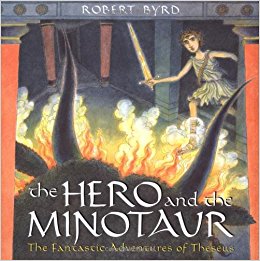 The Hero and the Minotaur: The Fantastic Adventures of Theseus, retold and illustrated by Robert Byrd
The Hero and the Minotaur: The Fantastic Adventures of Theseus, retold and illustrated by Robert Byrd
published in 2005 by Dutton Children’s Books
For a much more traditional, picture-book-length telling of the Theseus myths, check out this beautiful selection by Robert Byrd.
His stunning illustrations sparkle from the pages like gems on a necklace as we read of Theseus’ colorful encounters with the strongman Cercyon, Sinis the pine-bender, a brute of an ogre named Sciron, and of course, King Minos’ maze and Minotaur. Icarus makes his ill-fated flight, Ariadne’s crown becomes a constellation, and Theseus forgets about those black sails causing tragedy to cap his tremendous successes.
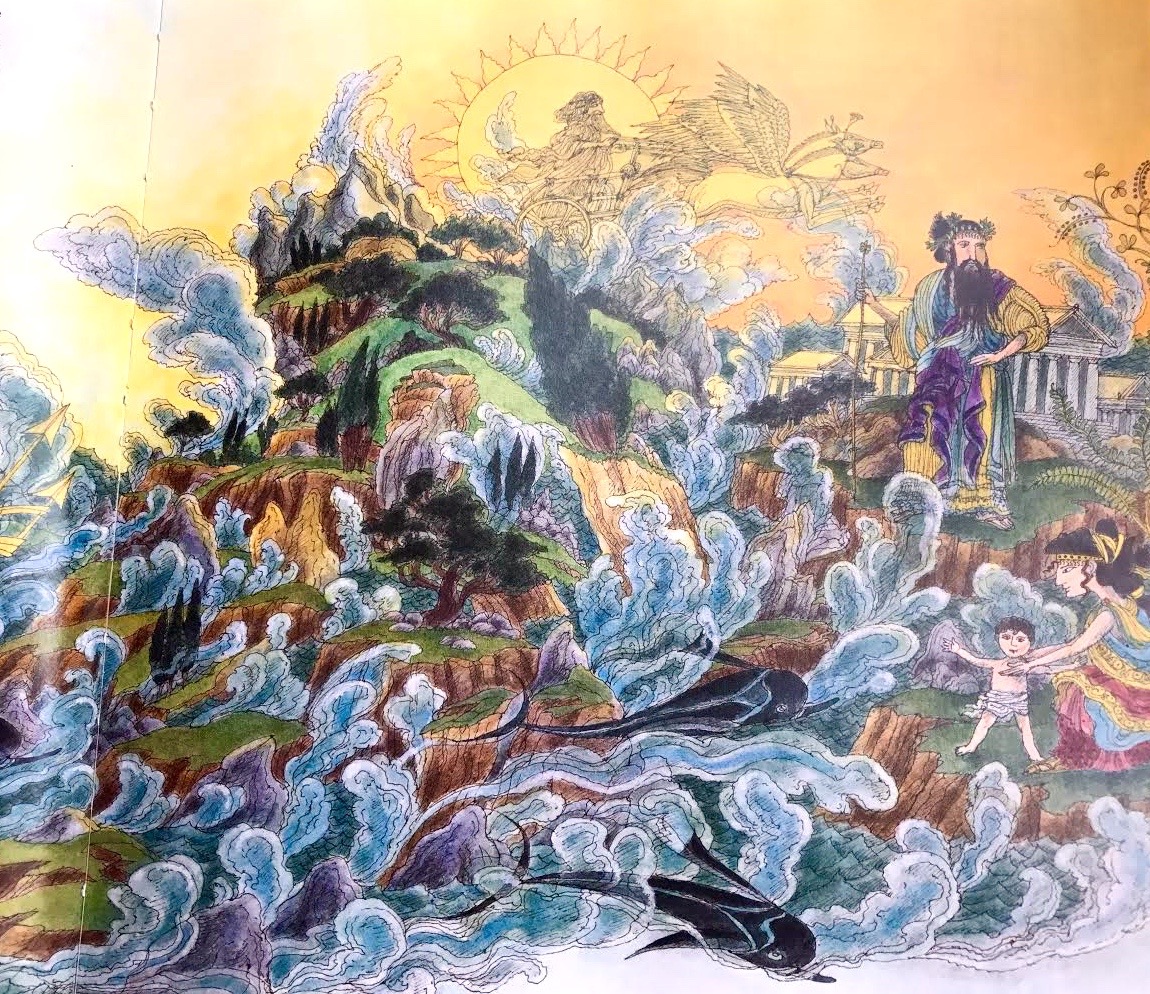
These myths have stood the test of time for a reason — they are fabulous! Treat your kids, ages 5 and up, to these larger-than-life stories for the ages.
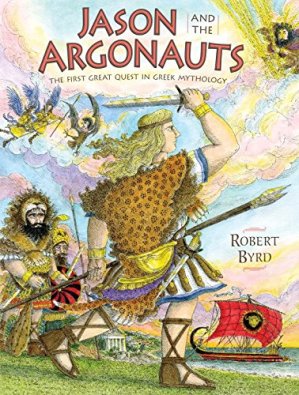 Jason and the Argonauts: The First Great Quest in Greek Mythology, retold and illustrated by Robert Byrd
Jason and the Argonauts: The First Great Quest in Greek Mythology, retold and illustrated by Robert Byrd
published in 2016 by Dial Books for Young Readers
48 pages
Ah, Robert Byrd! He creates such magnificent nonfiction for young readers — and older ones like me, too! Here he presents the journeys of Jason in vivid prose and oodles of detailed, stunning illustrations.
In his introduction, Byrd describes Jason’s tale as “full of wonders: not only a flying sheep, but also fire-breathing bulls, a many-headed monster, a serpent who never sleeps, and men turned into beasts. Greedy kings hungry for power and riches, murderous queens, scheming magicians, and a wondrous ship to brave the dangers of the high seas.” Well! Need I say more? I think not. Irresistible.
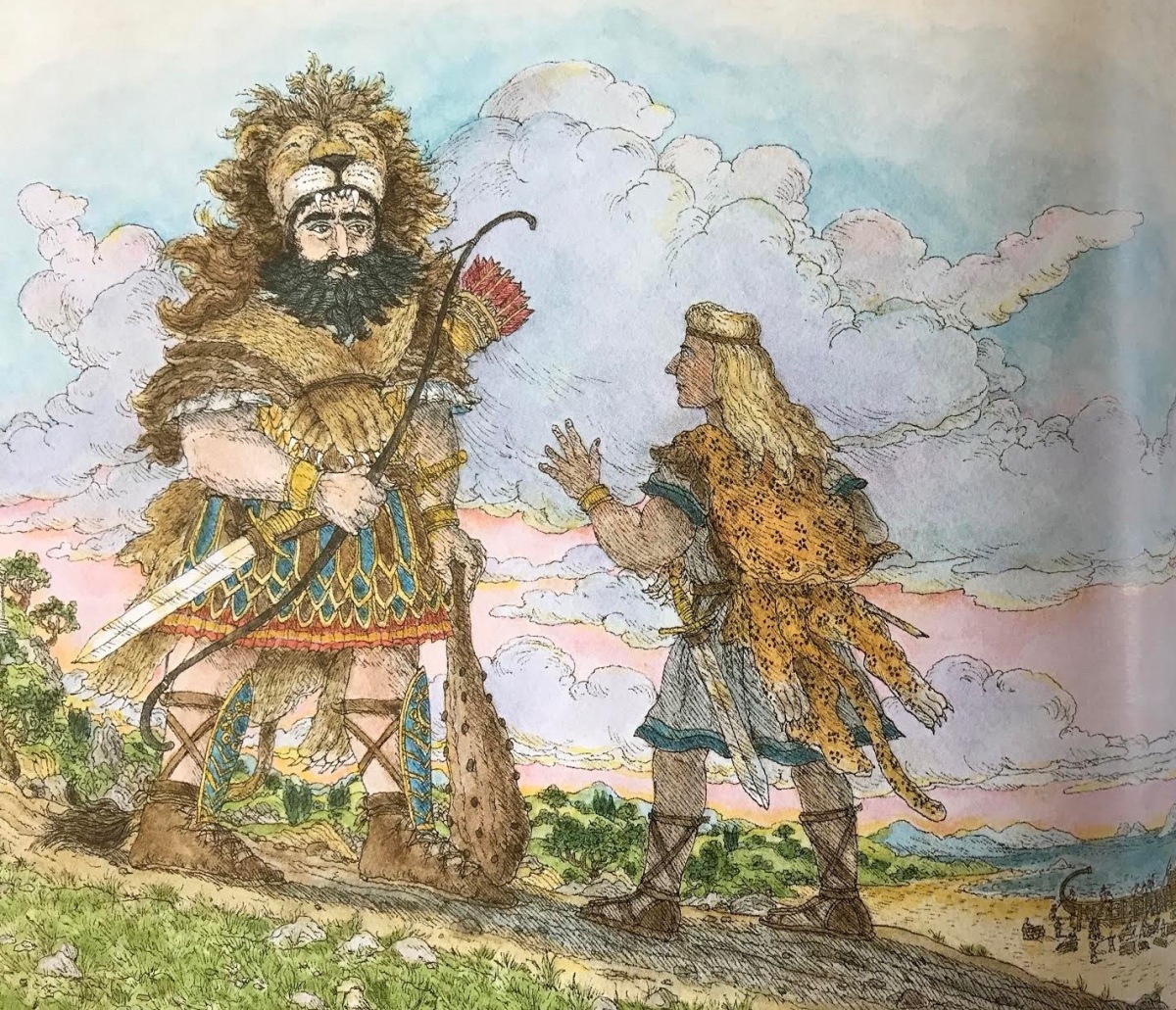
From his superb maps decorating the endpapers, to the cameos of famous Argonauts, through epic battles with harpies and those warriors sprouting up from the soil — Byrd’s colorful, imaginative, impeccable illustrations pull us into this world at every turn of the page. Sidebars highlight the various gods who are mentioned in the briefly-narrated stages of the quest.
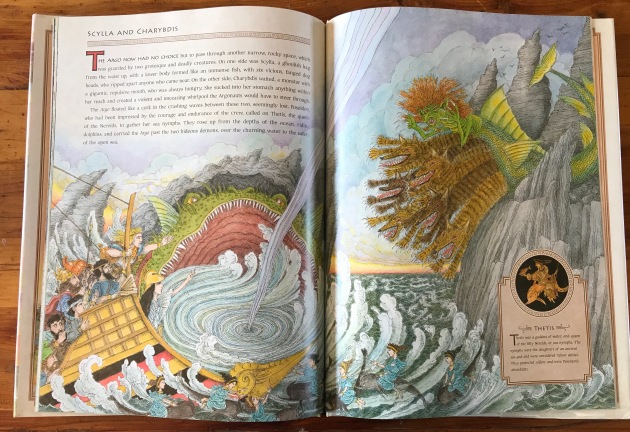
If you want your kids to fall in love with Greek mythology, do not pass go, do not collect $200…just get this book. Ages 5 and up.
 Lugalbanda: The Boy Who Got Caught Up in a War, told by Kathy Henderson, illustrated by Jane Ray
Lugalbanda: The Boy Who Got Caught Up in a War, told by Kathy Henderson, illustrated by Jane Ray The Epic of Gilgamesh, retold by Geraldine McCaughrean, illustrated by David Parkins
The Epic of Gilgamesh, retold by Geraldine McCaughrean, illustrated by David Parkins The Winged Girl of Knossos, written and illustrated by Erick Berry
The Winged Girl of Knossos, written and illustrated by Erick Berry The Hero and the Minotaur: The Fantastic Adventures of Theseus, retold and illustrated by Robert Byrd
The Hero and the Minotaur: The Fantastic Adventures of Theseus, retold and illustrated by Robert Byrd Jason and the Argonauts: The First Great Quest in Greek Mythology, retold and illustrated by Robert Byrd
Jason and the Argonauts: The First Great Quest in Greek Mythology, retold and illustrated by Robert Byrd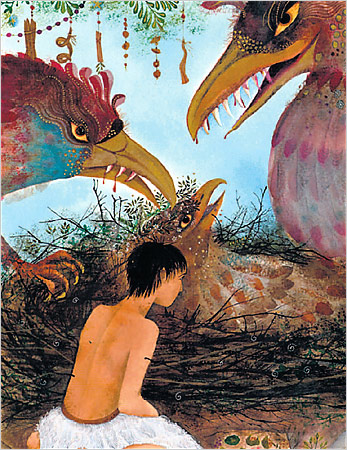











Thanks for all these suggestions! The only one we’ve read is the Gilgamesh. Have you read the Gilgamesh story retold and illustrated by Ludmila Zeman? She does it in three volumes, and it is top-notch. My kids loved it!
No I haven’t seen that one. Thanks a bunch for the recommendation!
[…] Odd and the Frost Giants, by Neil Gaiman Sigurd and His Brave Companions, by Sigrid Undset The Hero and the Minotaur, by Robert Byrd Jason and the Argonauts, by Robert Byrd Lugalbanda, retold by Jane Henderson Beowulf, retold by […]